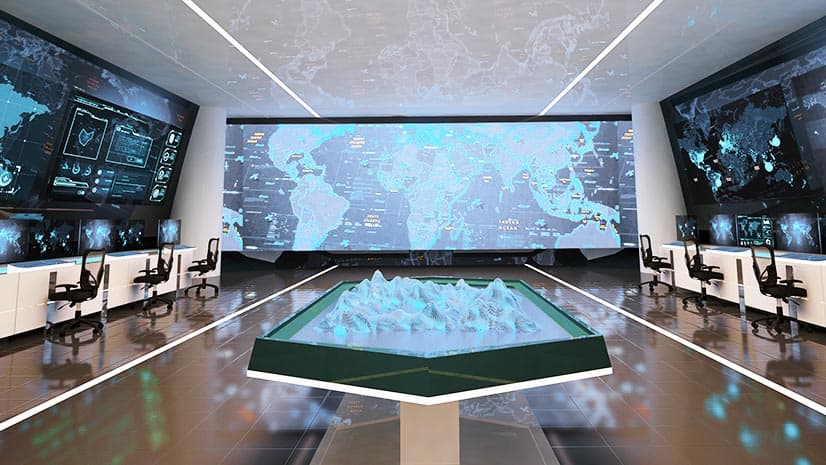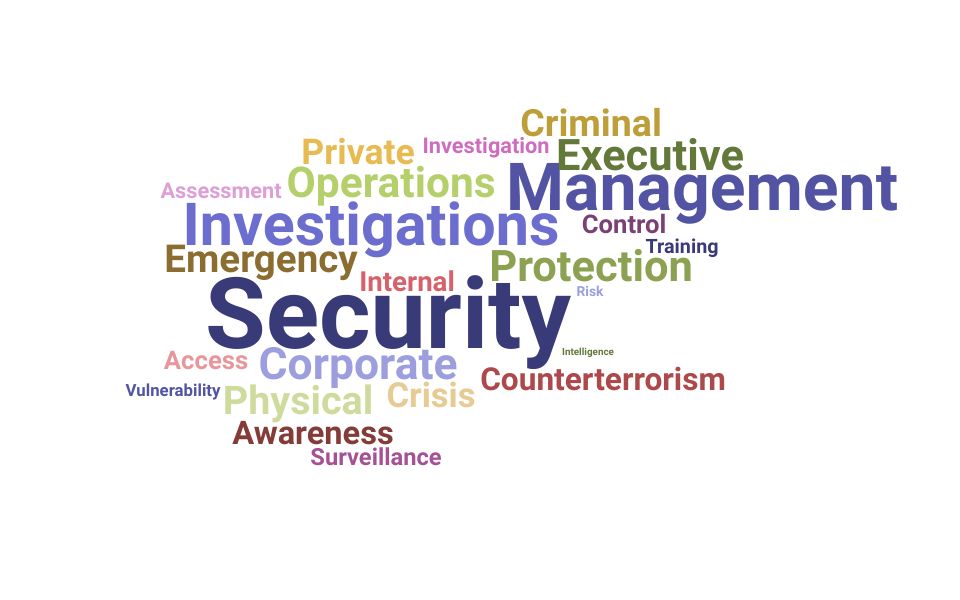Letting loose the Power of Corporate Security: A Comprehensive Guide
From Cybersecurity to Physical Measures: Enhancing Business Safety And Security in a Transforming Globe
In today's rapidly advancing digital landscape, the relevance of corporate security can not be overemphasized. As cyber dangers end up being progressively advanced and widespread, companies must exceed conventional cybersecurity actions to protect their procedures and assets - corporate security. This is where the integration of physical security measures ends up being critical. By incorporating the toughness of both cybersecurity and physical security, business can create a detailed protection technique that deals with the diverse variety of dangers they face. In this conversation, we will check out the transforming hazard landscape, the demand to incorporate cybersecurity and physical safety and security, the application of multi-factor verification steps, the significance of staff member recognition and training, and the adjustment of safety steps for remote workforces. By analyzing these key areas, we will certainly acquire beneficial insights into just how companies can strengthen their company safety and security in an ever-changing globe.
Understanding the Transforming Danger Landscape
The developing nature of the modern globe demands a thorough understanding of the transforming risk landscape for efficient company safety. It is essential for organizations to stay notified and adjust their safety and security measures to deal with these advancing threats.
One trick element of recognizing the changing risk landscape is acknowledging the different kinds of hazards that companies encounter. Additionally, physical threats such as theft, criminal damage, and company reconnaissance continue to be widespread worries for organizations.
Monitoring and evaluating the hazard landscape is vital in order to recognize potential threats and vulnerabilities. This includes staying updated on the current cybersecurity trends, evaluating hazard intelligence reports, and carrying out routine threat evaluations. By recognizing the changing hazard landscape, organizations can proactively carry out appropriate safety and security measures to alleviate risks and shield their possessions, credibility, and stakeholders.
Integrating Cybersecurity and Physical Security
Incorporating cybersecurity and physical safety and security is essential for extensive company security in today's electronic and interconnected landscape. As companies progressively rely on technology and interconnected systems, the borders between physical and cyber hazards are coming to be obscured. To properly guard versus these dangers, an all natural technique that incorporates both cybersecurity and physical protection measures is necessary.
Cybersecurity concentrates on shielding electronic assets, such as data, systems, and networks, from unauthorized gain access to, disturbance, and burglary. Physical protection, on the various other hand, includes actions to safeguard physical properties, people, and facilities from vulnerabilities and threats. By incorporating these 2 domains, organizations can attend to susceptabilities and threats from both physical and electronic angles, consequently enhancing their general safety and security position.
The assimilation of these 2 disciplines enables for an extra thorough understanding of safety and security risks and enables a unified action to events. Physical gain access to controls can be improved by incorporating them with cybersecurity methods, such as two-factor authentication or biometric identification. Likewise, cybersecurity procedures can be enhanced by physical safety procedures, such as security video cameras, alarms, and safe and secure gain access to factors.

Executing Multi-Factor Authentication Procedures
As companies progressively focus on comprehensive safety and security steps, one efficient strategy is the implementation of multi-factor verification actions. Multi-factor verification (MFA) is a protection technique that requires customers to give multiple types of recognition to access a system or application. This strategy adds an extra layer of defense by integrating something the customer knows, such as a password, with something they have, like a protection or a finger print token.
By carrying out MFA, companies can considerably improve their security pose - corporate security. Traditional password-based authentication has its restrictions, as passwords can be conveniently jeopardized or failed to remember. MFA reduces these threats by adding an additional authentication variable, making it much more challenging for unapproved individuals to access to delicate info
There are numerous kinds of multi-factor verification methods available, including biometric verification, SMS-based confirmation codes, and equipment tokens. Organizations need to assess their details demands and select one of the most proper MFA remedy for their needs.
Nonetheless, the execution of MFA ought to be very carefully planned and implemented. It is crucial to strike a balance between security and use to prevent customer aggravation and resistance. Organizations ought to additionally consider potential compatibility concerns and provide ample training and support to guarantee a smooth change.
Enhancing Worker Awareness and Training
To strengthen company protection, companies should prioritize boosting worker understanding and training. In today's quickly progressing danger landscape, staff members play a critical role in protecting a company's sensitive info and possessions. Numerous safety and security violations happen due to human error or absence of awareness. For that reason, companies need to buy comprehensive training programs to educate their workers regarding possible dangers and the most effective techniques for reducing them.
Effective staff member awareness and training programs ought to cover a large range of subjects, including information security, phishing strikes, social design, password health, and physical security steps. These programs must be customized to the certain needs and duties of different employee duties within the organization. Regular training workshops, simulations, and sessions can help staff members develop the necessary abilities and understanding to recognize and react to safety dangers efficiently.
Furthermore, companies ought to motivate a society of security recognition and offer ongoing updates and reminders to maintain staff members informed about the link current hazards and reduction techniques. This can be done through interior communication channels, such as e-newsletters, intranet sites, and email campaigns. By promoting a security-conscious labor force, companies can considerably decrease the probability of safety incidents and safeguard their useful possessions from unapproved gain access to or compromise.

Adapting Security Steps for Remote Workforce
Adjusting corporate security measures to suit a remote labor force is crucial in guaranteeing the security of delicate details and assets (corporate security). With the boosting fad of remote work, companies must implement suitable safety and security procedures to mitigate the threats related to this new method of working
One crucial element of adapting safety procedures for remote job is developing safe and secure communication channels. Encrypted messaging platforms and virtual personal networks (VPNs) can help safeguard delicate info and stop unapproved gain access to. Furthermore, organizations should impose the use of solid passwords and multi-factor verification to improve the protection of remote accessibility.
An additional important factor to consider is the implementation of secure remote accessibility remedies. This entails supplying workers with safe accessibility to business sources and data with virtual desktop computer infrastructure (VDI), remote desktop computer methods (RDP), or cloud-based services. These technologies make certain that sensitive info continues to be secured while allowing employees to execute their functions efficiently.

Lastly, comprehensive safety and security understanding training is important for remote employees. Training sessions need to cover best practices for securely accessing and managing delicate information, determining and reporting phishing attempts, and preserving the general cybersecurity health.
Verdict
In conclusion, as the danger landscape proceeds to advance, it is important for organizations to strengthen their security determines both in the cyber and physical domain names. Integrating cybersecurity and physical safety and security, applying multi-factor verification measures, and enhancing worker awareness and training are necessary actions in the direction of accomplishing durable business safety. In addition, adjusting security measures to fit remote workforces is necessary in today's altering article source globe. By applying these steps, organizations can minimize threats and protect their beneficial possessions from potential dangers.
In this discussion, we will discover the transforming hazard landscape, the requirement to integrate cybersecurity and physical security, the application of multi-factor authentication actions, the significance of employee recognition and training, and the adaptation of safety measures for remote workforces. Cybersecurity actions can be matched by physical security procedures, such as surveillance cameras, alarm systems, and safe and secure accessibility factors.
As companies progressively prioritize thorough safety and security actions, one effective technique is the implementation of multi-factor authentication measures.In verdict, as the hazard landscape proceeds to develop, it is important for companies to strengthen their protection determines both in the cyber and physical domains. Incorporating cybersecurity and physical security, executing multi-factor verification measures, and enhancing worker recognition and training are necessary actions towards accomplishing durable corporate safety and security.